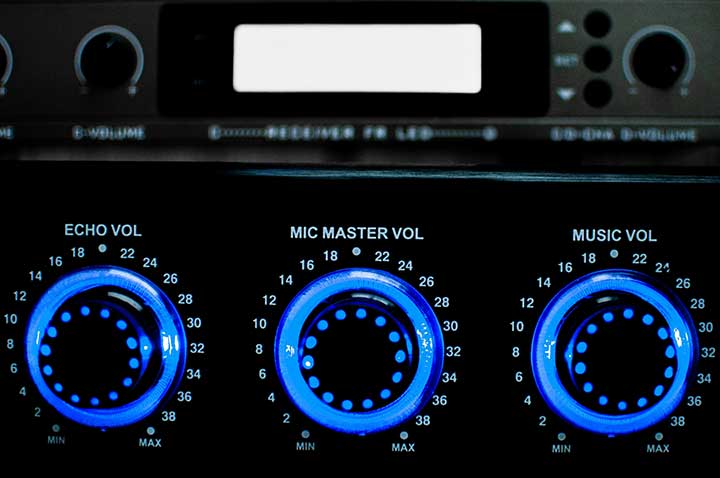
By: Sophie Allen Feb 24/2025
Creating compelling content often involves juggling multiple tasks and is a time-consuming process. It demands creativity, strategic thinking, and thorough research. Unless you’ve got a whole team of creatives at your disposal, the job of content creation falls to one, maybe two, individuals. With so many different pieces on the go at once, it’s easy to hit a creative block, get stuck on one piece for far too long, or otherwise fall into a rut. That’s where AI tools can help to keep you motivated, inspired, and on track.

Though some may still hesitate to adopt AI tools into their content creation process, it is important to shift one’s mindset. Rather than seeing AI as something aimed to replace, see it as something to assist. Adopting an AI tool can boost productivity, save time, and be a second opinion when it comes to content creation. Here’s how we at Snaptech are using AI tools to assist with our content creation.

If you’re stuck trying to think up a fresh idea for a piece of content but have a general topic in mind, you can ask ChatGPT to help you come up with some suggestions. For the most relevant and creative ideas, be as specific as possible when creating your prompt and include as many details and background information as you can. The more specific you make the prompt, the better the suggestions. You may need to write follow-up prompts to get what you’re looking for, or you may get one or two good suggestions from the first prompt that you can feed back and ask to be expanded on. Try to provide as much context as possible to get better results without too much tweaking.
Once you’ve got an idea that you want to run with, you’ll want to again be specific and detailed with your prompt. To craft an effective one that will generate the most usable outline, be sure to include the following information:
Clearly Define the Purpose
Specify the Target Audience
Include Key Topics or Themes
Mention Formatting Preferences
Provide Any Constraints or Requirements
Keeping these items in mind when crafting your prompt will help ensure a structured and tailored outline for your needs.
Keeping these items in mind when crafting your prompt will help ensure a structured and tailored outline for your needs.
Specify the Length


At Snaptech, one of the most common ways we use AI when creating content is for tone checking and adjustment. AI tools can transform passive voice into active voice or rework memos that unintentionally come across as aggressive and adjust them to sound more informative while still conveying the same information. These tools are especially helpful for individuals who may not feel confident in their writing or struggle to adapt their tone to different contexts. Using AI as a writing assistant in this way saves time across the company, as team members can turn to ChatGPT or similar tools for quick feedback instead of waiting for a colleague to review their work.
Once a piece of content is complete and you’ve given it a preliminary once-over for spelling, grammar, and clarity, it can be helpful to run the work through an AI writing tool to get feedback. You can ask the AI what it thinks of certain passages if you need confirmation that the wording makes sense or you can ask for feedback in making the text stronger, if using more examples would help, or anything else it can suggest to you. This can help strengthen your writing by allowing you to blend the suggestions with your own initial draft to create a piece that is more fleshed out and comprehensive without having to put the piece down and come back to it with fresh eyes in a day or two. Once done, you can pass the work along for human review to double-check that everything reads smoothly and humanly. I find that having that second opinion tell me what it likes and offer suggestions helps me know when I’m on the right track and prevents me from getting discouraged. It’s also a nice little ego boost when ChatGPT compliments my work.


My favourite use for ChatGPT is as a partner to ask questions and dig deeper with follow-up questions based on its responses. This helps when I’m stuck on an assignment and need a way to get started. I’ll often begin with a broad question about the topic I’m working on and then ask ChatGPT how it feels about certain aspects from a different perspective. I weave in my own thoughts and opinions to see where it might challenge me, where it agrees, and where it triggers a new perspective neither of us initially considered but one we can both appreciate.
For example, in The Pros and Cons of Using AI-Generated Images for Marketing blog, I asked ChatGPT about the benefits of using AI over an artist. I then challenged its answers with a series of “what-abouts” to test its reasoning and introduce the human side of the argument. The ensuing discussion helped shape the article into the final product. It’s a process that doesn’t simply give me answers–it pushes me to think more critically about the topic I’m working on.
Once I feel like ChatGPT understands my writing approach and style, I’ll ask for feedback or ideas to refine my content. One area I often struggle with is coming up with catchy headings, so I’ll ask for suggestions. Sometimes, I’ll combine elements from multiple suggestions or create something similar to better fit my tone. The result is a collaborative effort where AI serves as a creative sounding board, not a replacement for my voice.
We’ve previously discussed different AI tools for SEO that can help with content generation, but there are other AI programs like Grammarly as a spelling and grammar check, or Hemingway to make your writing more accessible to readers. While these tools are incredibly useful, they should be used sparingly, or at least with a good amount of human supervision. The goal is to enhance your content without losing its unique personality.

There are many ways to integrate AI into your content creation, and likely even more in development as you read this. From grammar and tone checking to brainstorming, outlining, or creating entire content pieces, using AI in your content strategy is ultimately up to the individual.
While many are quick to adopt all of the new tools available, others remain hesitant and keep every piece 100% human-generated. The trick is finding the balance that makes sense to your workflow while maintaining the same level of quality or better. Whether you’re using AI for a little nudge or a big push, it’s important to remember that it should always serve as a tool to enhance your creativity, not replace it.
If you’re still stuck with content creation, contact Snaptech’s experts for a content strategy tailored to your business and clientele.